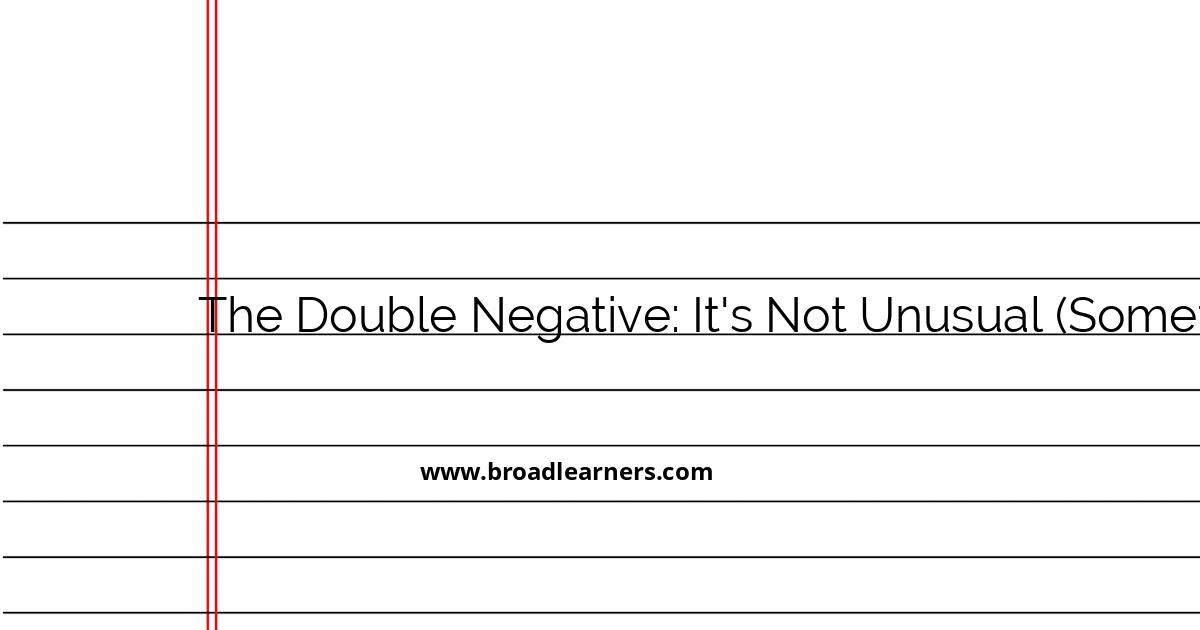The use of double negatives in the English language often confuses both native speakers and learners alike. While traditionally discouraged in standard English, double negatives can be found in certain dialects and contexts, and sometimes even serve a purpose. Let's delve into the world of double negatives, understanding when they're appropriate, and how they can be used effectively.
What is a Double Negative?
A double negative occurs when two forms of negation are used within the same clause. In standard English, this construction is usually avoided, as it can lead to misunderstandings or redundant statements. However, in some languages and dialects, double negatives are grammatically correct and can even intensify the negation.
Example:
"I don't have no money."
In standard English, this example should logically mean that the speaker has some money since the double negative cancels out the negation. However, in some dialects, it emphasizes the lack of money.
The Role of Double Negatives in Standard English
In standard English, a double negative is typically avoided because it can result in a positive statement. Therefore, clarity is essential when using negatives.
Examples:
Incorrect: "I don't want no cake." (suggesting the speaker does want cake)
Correct: "I don't want any cake."
Appropriate Use in Dialects and Informal Speech
In certain dialects and informal contexts, double negatives are used for emphasis and are understood within the cultural context of those speaking. These constructions can highlight the speaker's intention more emphatically than a single negative.
Example:
"I ain't never seen nothing like it!"
In this example, while there's a literal double negative, it emphasizes that the speaker has indeed never seen anything like it.
Double Negatives in Literature and Songs
Double negatives can be a stylistic choice in literature and song lyrics, often contributing to the character's voice or the overall mood. This purposeful use of double negatives can add depth and authenticity to dialogues and narratives.
Examples:
Song: "I can't get no satisfaction." - The Rolling Stones
This line is iconic for its use of a double negative, emphasizing the dissatisfaction being described.
Conclusion
While double negatives are often avoided in formal writing and standard English, they hold cultural and emotional significance in specific contexts and dialects. Understanding their use and purpose allows for more versatile and expressive language use. By being aware of the context, one can appreciate the nuances double negatives bring to communication.

Did I miss anything? Respond below